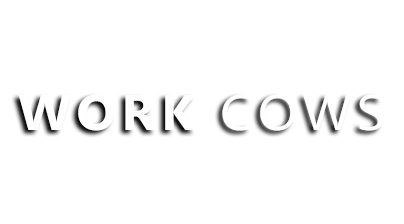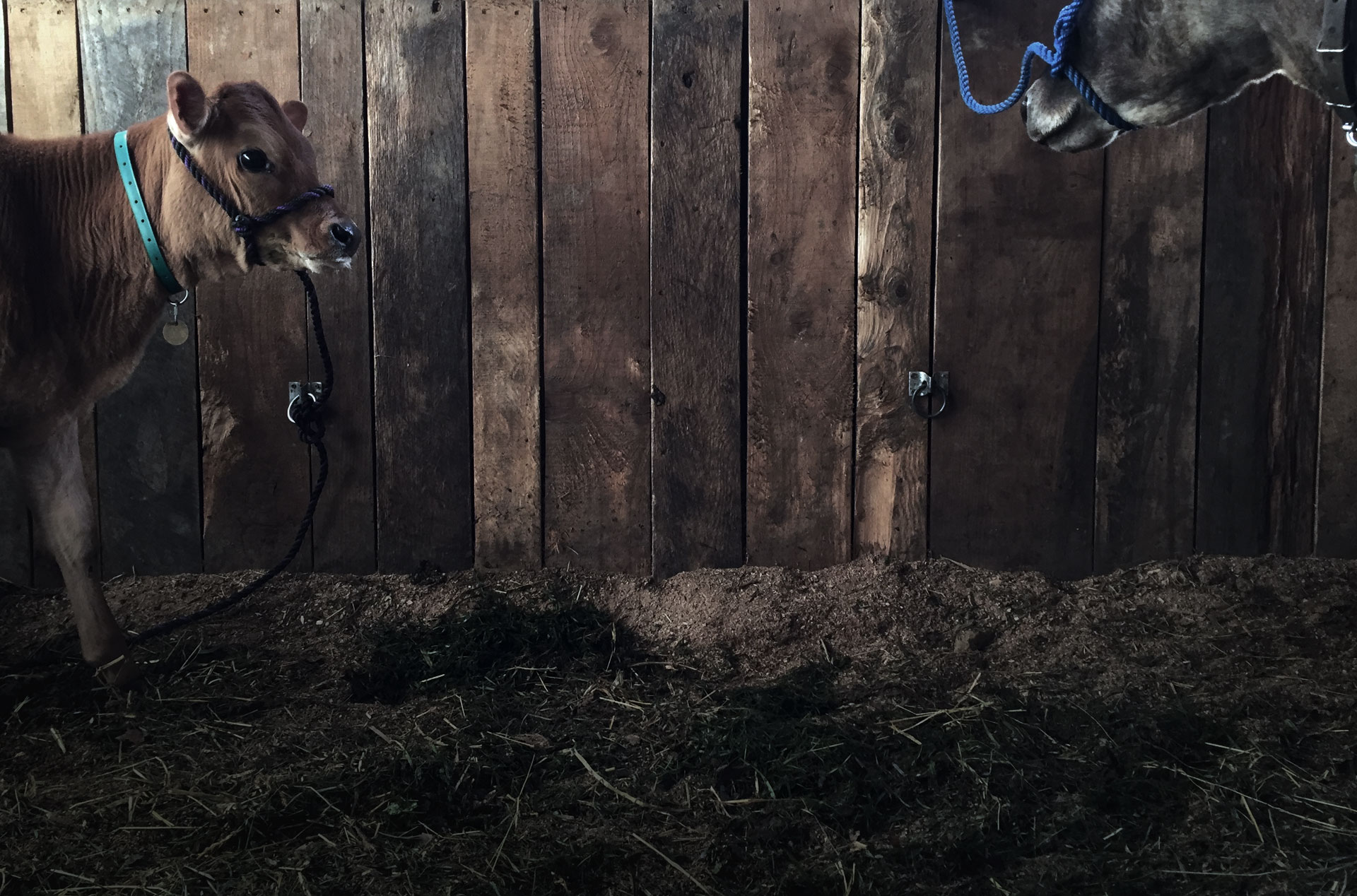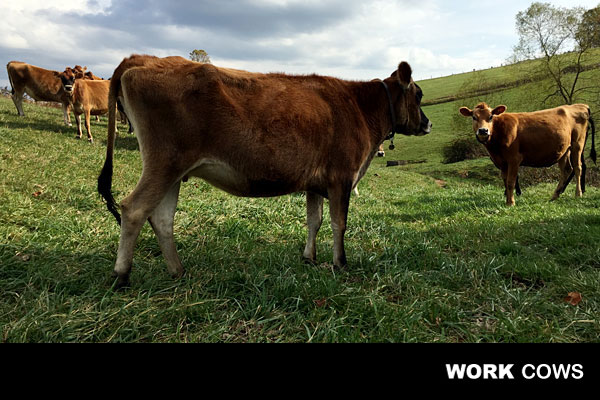
01 Dec Wild to Mild: Nurturing a Positive Relationship with the Working Bovine
Modern cattle retain many of the instincts that have allowed their species to survive throughout history. When kept in a herd situation and handled only minimally for basic care, cattle will naturally use these instincts to maintain a buffer zone between them and other creatures or objects that they see as unfamiliar or deem to be a potential threat. Youngsters will be shifted to the interior of the grouping for safety, while the adult cattle will face outward in a collective show of strength – and horns, in some cases – to warn potential predators away from their herd.
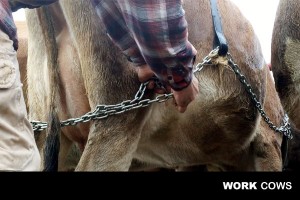
The Importance of Early Trust Building
While these protective instincts are important for the species, especially when cattle are kept in large herds, they can be a problem for the family cow owner who must work closely with their dairy animals on a daily basis. This is particularly true when these animals are tasked with helping to provide power for the small farm, in addition to milk and calves for meat or profit.
Since most adult dairy animals weigh more than five times the amount of their human caretakers, a relationship of trust must be built and continuously nurtured. While it is possible to gain the trust of older animals through hard work, time and determination, most farmers will find the process much faster and easier when it begins at birth or very soon thereafter.
The Scientific Approach to Building Bovine-Human Relationships
Science has proven that animals form attachments and develop their own sense of identity through a process called imprinting. In bovines, the mother cow is imprinted on her calf as she nurtures it immediately after the birth, forming a bond that will allow the calf to easily identify its mother even in a herd scenario.
Humans have used imprinting to help domesticate animals and birds for centuries, as demonstrated by first century B.C. writings from Roman agriculturalist Lucius Moderatus Columella. He noted that wild fowl could be domesticated easily by collecting wild laid eggs and placing them under tame chickens for hatching. When hatched, the young wild fowl would become attached, or imprinted, to the movement of the mothering chicken, forming a lasting bond.
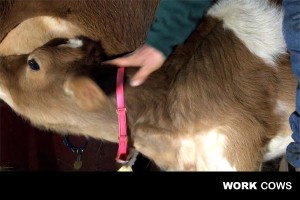 Farmers who wish to build a trusting relationship with their cows can use the process of imprinting as each calf is born on their farm. By working in close proximity to the newborn calf, touching it and maintaining close visual contact soon after birth, the imprinting process occurs and the calf sees and accepts the human as something of a co-parental figure. Even as the calf bonds with its mother, the early imprint of the human will remain, helping to lay the foundation for the trust that will be necessary for training in the future.
Farmers who wish to build a trusting relationship with their cows can use the process of imprinting as each calf is born on their farm. By working in close proximity to the newborn calf, touching it and maintaining close visual contact soon after birth, the imprinting process occurs and the calf sees and accepts the human as something of a co-parental figure. Even as the calf bonds with its mother, the early imprint of the human will remain, helping to lay the foundation for the trust that will be necessary for training in the future.
Small Steps Yield Big Returns
As the calf grows, training it for a productive future is best achieved in small, incremental steps. Each day the farmer will reinforce the bond shared with the calf by handling it and increasing the comfort level of the relationship.
Over a period of days, it will be possible to begin basic training procedures, such as halter and lead training. As the calf grows and gains confidence, more difficult tasks can be added, such as pulling or carrying objects. This allows the calf to develop trust and obedience, while becoming accustomed to the routine, helping to ensure that it remains manageable even when it has grown to full adult size.
Acclimating to the Environment
In addition to a regimen of training to reinforce learned skills and add new ones, farmers who want to raise truly “bomb-proof”, working cows must make sure they are allowed to fully acclimate to their environments. Farming can be a noisy business, with the engine sounds of tractors and equipment, chainsaws, tillers, trimmers, mowers or nearby traffic, in addition to other common sounds, such as barking dogs, clanking buckets, children playing and horns honking.
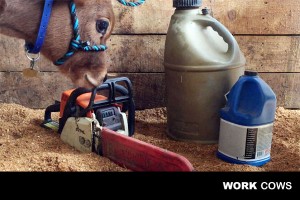 Cows that are exposed to the sights and sounds of farming on a daily basis learn to accept them without becoming startled or stressed. Farmers can enhance this process by developing and using calming techniques while training the growing calf. Handling the calf and speaking to it in a calming voice while introducing it to new sights or loud sounds helps keep the calf from becoming nervous or fearful. Because cows have a natural curiosity, however, they may need to investigate new items placed in their areas or any unfamiliar animals or people.
Cows that are exposed to the sights and sounds of farming on a daily basis learn to accept them without becoming startled or stressed. Farmers can enhance this process by developing and using calming techniques while training the growing calf. Handling the calf and speaking to it in a calming voice while introducing it to new sights or loud sounds helps keep the calf from becoming nervous or fearful. Because cows have a natural curiosity, however, they may need to investigate new items placed in their areas or any unfamiliar animals or people.
Using a dairy cow to provide power on a farm or homestead is another one of the many benefits to be gained from a great bovine-human relationship, but it does require extensive training and dedication, as well as a careful selection process.
Source
http://www.dairyspot.com/dairy-farming/dairy-farming-facts/types-of-cows/
http://www.pbs.org/wnet/nature/my-life-as-a-turkey-whos-your-mama-the-science-of-imprinting/7367/
http://www.britannica.com/biography/Lucius-Junius-Moderatus-Columella
